What to Wear Hiking: Clothes According to Each Season
The issue of what to wear hiking is something that depends on a lot of factors, and it can’t be settled without proper consideration. It’s a fact that your own life may depend on what you’re wearing so we’re not taking things lightly either.
[the_ad_group id=”21″]
That’s why we’ve tried to cover as many hiking situations as possible, and give you a few of the basics clothing items for each.
But let’s start you off with the fundamental priorities to consider when choosing your hiking equipment – whether we’re talking about clothes or not.
How Do You Choose Your Hiking Stuff?
No matter where you’re going, for how long or who you’re going with, your gear should always meet all the four requirements below, in their order of importance.
- Safety
- Comfort
- Versatility
- Style
Safety is the first thing you’ll need to take into account. Your hiking wear should first be safe for you – no stilettos when climbing mountains. But it should also provide protection from the environment, for instance a good raincoat should be windproof as well as waterproof, because most rains are accompanied by strong winds.
Comfort is the second most important thing to consider, since choosing clothing items or footwear that doesn’t fit may prove a danger to your health. There are a lot of people who prefer to sacrifice their comfort for a better price when choosing hiking boots for example. These people just end up with blisters and wounds that ultimately get infected, and no one wants that.
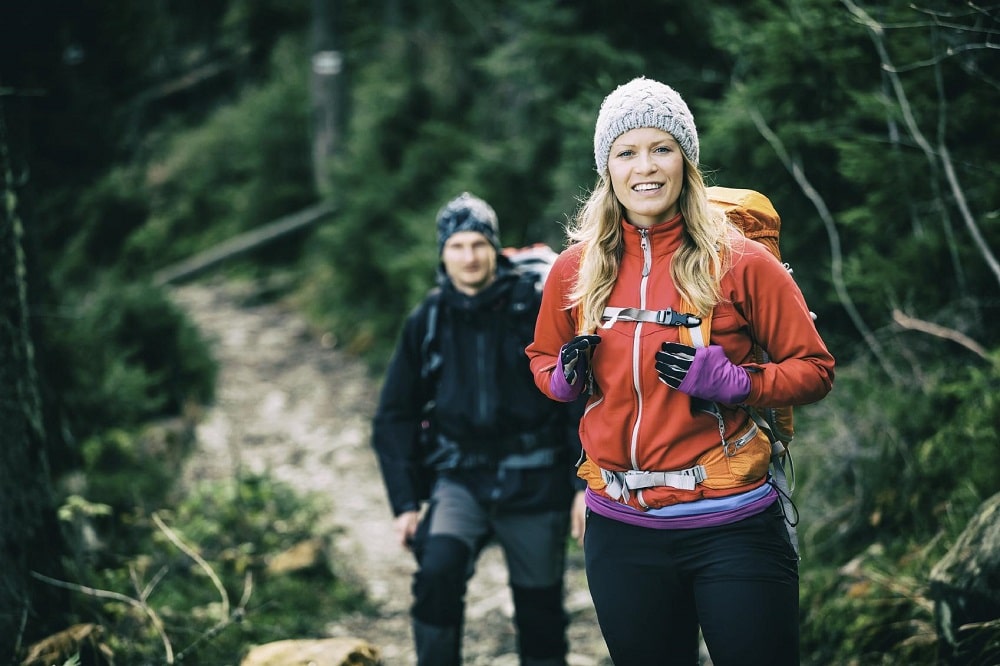
Versatility is the next thing you should have in mind. If your equipment is functional and can meet different purposes, then you’ve definitely picked a winner. Just consider the case of convertible pants. These can be transformed into shorts very easily, which makes them great for warmer weather.
Style is something most hiking aficionados would probably never consider in their life. But wanting to look good on the trail is no crime, provided you don’t make style your number one priority. You probably noticed that most hiking clothes are quite long and large.
This makes you look weird and it’s probably not even comfortable either, so consider buying items that fit your body shape better. That will help you look good and feel good at the same time.
What Are The Basic Items?
That being said, let’s take a look at what items you should consider for your basic wear:
Footwear
When it comes to footwear, there are different sorts of ways you can protect your feet depending on where you’re going and how warm or cold the weather is.
Hiking boots
- Are more appropriate for cold weather.
- Work well in warm weather too if you’re on a mountain trail.
- Offer your feet a lot of support, not letting your ankles wiggle.
- Take some impact off your joints when walking and/ or climbing.
- Some models can be heavy or clunky, so it takes some getting used to them.
Sneakers
- Work better in warmer weather.
- Are a good option if you’re not walking uphill or downhill.
- They offer less support for your ankles when climbing or going down a trail.
- They’re more comfortable since they’re less heavy.
- Some models don’t absorb impact, which might not be so good for your joints.
Socks
Choosing the right pair of socks can definitely make the difference between having protected feet or walking around in sweaty socks that give you blisters. That’s why you have to consider:
- The length of your hike – the longer the hike, the more important the socks are.
- The material – wool or synthetic materials are better than cotton, which doesn’t let your feet dry since it absorbs moisture.
- The purpose – moisture wicking, insulation and warmth are the main roles of good hiking socks, but take comfort into account as well.
Pants
The main type of pants you can think of when hiking depends on their:
- Length – longer pants are best in a lot of environments, even when it’s hot outside, because they offer a lot of protection. Shorts are a good option when you’re not hiking for a long period of time and there aren’t any major obstacles on your trail.
- Material – choose lightweight pants that dry quickly and offer you the proper protection. Don’t rely too much on jeans for instance if you’re hiking in a mountainous terrain for a longer time, because they aren’t comfortable at all, making you sweaty.
- Color – choose lighter shades in summer because they reflect sunlight, and don’t let you get too hot, while darker colors are more appropriate during wintertime. Don’t wear camouflage pants in the desert, they will prove a nightmare.
Shirts
The most important factors to consider when choosing your shirt, apart from the weather which should tell you if you need a short-sleeved, thin shirt, or a long-sleeved thicker shirt, are:
- A good shirt should keep you dry.
- It should feel comfortable.
- Choose synthetic materials, and not 100% cotton because of its moisture absorbing properties.
- It shouldn’t tear easily so take into account the durability and craftsmanship.
- It should be from a lighter material, that lets your skin breathe.
- Hiking means effort, which means sweat, but your shirt should hide unpleasant body odor.
Jacket
Again, if you’re hiking in the dessert or if you’re away for a shorter time span of about a day and you’re confident that the weather isn’t suddenly going to turn against you, a jacket might not even be that important. But any decent survivalist knows how important it is to have a good jacket with you, that’s:
- Lightweight, so you can carry it easily in your backpack when you don’t need it.
- Waterproof, so it keeps you dry in rainy weather.
- Windproof, so it blocks the wind and keeps you warm.
Headwear
Something to cover your head with is always a good idea, no matter the weather.
Hats
- Amazing for warmer weather when you need sun protection.
- Long brimmed hats are better when it’s sunnier, because they protect your ears, neck and shoulders as well.
- Choose a waterproof hat in case it rains.
Bandanas
- Work better when there’s not much danger of getting sunburns or heat strokes.
- They’re very versatile, being able to use them for many different purposes like a mask, a towel or a washcloth.
- They’re not waterproof, and can’t protect you from the wind as well as a hat.
Fur caps
- More appropriate for hikes in a colder climate.
- Choose the materials that offer you insulation and wind protection.
What Do You Wear Depending On The Season?
Even though we’ve just listed the basic items above, we need to particularize them for the four different seasons of a year. That’s because the weather conditions will drastically influence how your hike is going to be like and what you’ll need for that.
But more to this point, a lot of people don’t stop to consider how choosing the right gear can impact their time off and end up choosing sandals and snickers for a springtime mountain hike, which can be rather dangerous.
Hiking In The Spring And Autumn
There’s nothing more beautiful than a spring hike during which you can see the rebirth of nature taking place right under your eyes. The strong green shade is complimented perfectly by the clear blue of the sky, and the moist odors of the wood are perfect for creepy crawlers like spiders. All nature must come to life again, right?
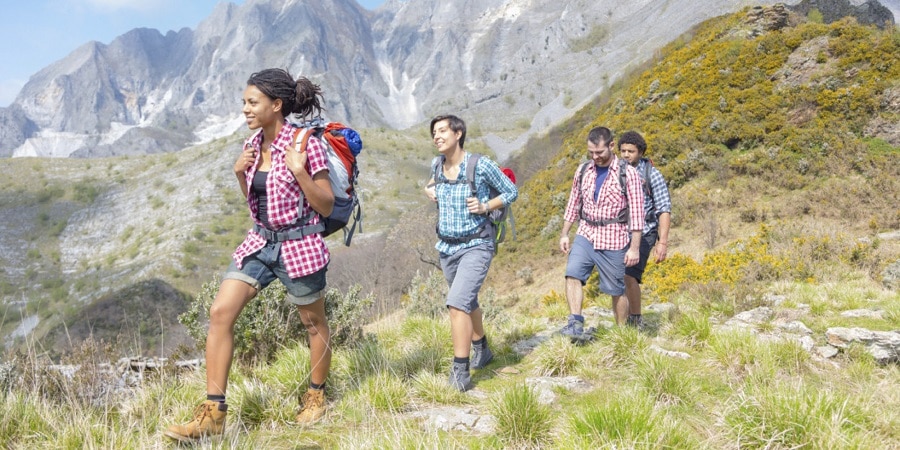
The same goes for autumn, when the vibrant colors mask the transcendence towards the end of a cycle, most insects perform their swan song, and warm weather soon turns cold.
Which is why you definitely need:
Hiking boots
When you’re going on a spring or fall adventure in the wilderness, consider how important it is to take your hiking boots along. That’s because the weather hasn’t settled completely quite yet, and you need something to keep you warm.
Another reason is that hiking boots are better than snickers when it comes to insulating your feet and protecting them from the heavy rains that occur during spring and autumn in certain areas.
Besides, boots are your best friend in regards to traction and support, because the moist grass is still accompanied by some patches of ice and some patches of mud. That makes for a very slippery environment, so you need something to keep your ankles steady and prevent you falling.
And you likewise need some high enough footwear to protect you from the creepy crawlers we’ve mentioned earlier. Check out our experts review of the best hiking boots to guide your choice.

If you’re not a hiking boots type of guy, and if you have space, you can still bring along a pair of snickers or sandals in your backpack for the shorter hikes you can do around your camping place.
Socks
The socks you need to choose during these seasons should meet all the requirements above regarding material, durability and purpose.
However, since these are times when it can be warm one day and very cold the next day, you should consider bringing different types of socks along. To make choosing easier, see our experts reviews of the best and warmest socks to keep your feet toasty.
Warmer socks, that offer a higher degree of cold protection and insulation are more appropriate for colder days, while lighter socks that are better at wicking moisture are your go-to wear for warmer days.
But if we were to chose between these two types of socks, we would opt for the lighter socks instead of the warmer ones, because you can always layer them. On the other hand, you can’t take off warmer socks. Having no socks in your hiking boots may lead to blisters and suppurating wounds.
Pants, shirts and jacket
It’s a fact that springtime and autumn look differently in various parts of the globe, so make sure you take into account the average temperature in the particular area you’re going in, as well as if it’s especially rainy or windy. For the top hiking apparel, see our article review of the best hiking pants to give you more options.
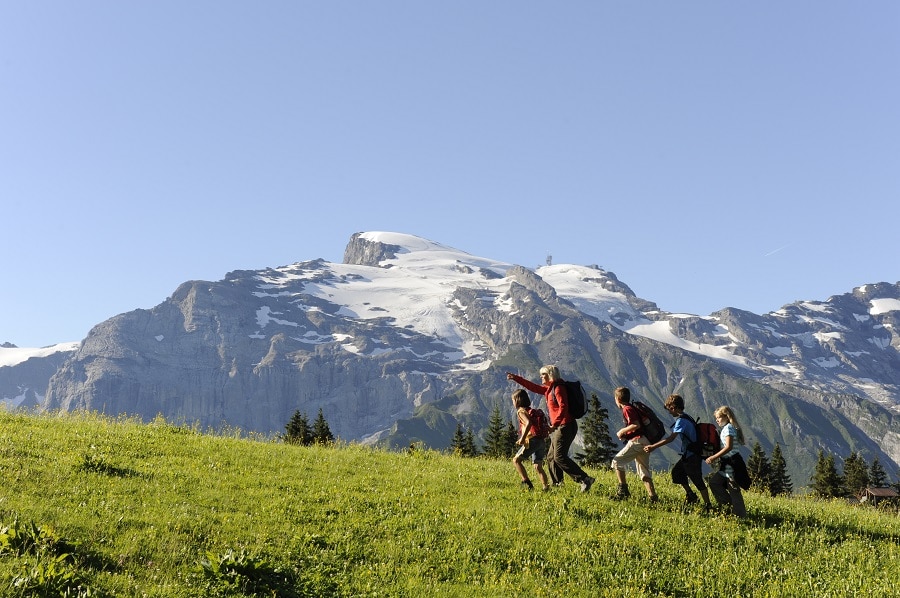
If you forgot to do that or if you’re still not sure how the weather is going to be, convertible pants are your ally now, for the same reason of the alternating cold and warm days.
The same versatility of convertible pants can also be achieved by long-sleeved shirts. As such, you can easily turn up their sleeves and enjoy a warmer few hours during noon, but still end your hike with no problems during the evening.
[the_ad_group id=”22″]
Having a jacket with you is another mandatory piece of equipment, because of the rains and strong winds that accompany the change from winter to summer and vice-versa. Choose a jacket that’s warmer in early spring/ late autumn and lighter in late spring/ early autumn, so you won’t get too hot or too cold.
Hat
A hat is the best choice during these seasons for various reasons. It’s not as warm as a fur cap, but it’s still warm enough to protect your head from the cold. Moreover, it provides better rain and wind protection than either a fur cap or a bandana, at the same time keeping you safe from the sunrays which can be pretty strong at high noon.
But as we’ve said before, weather looks differently depending the place you’re in, so a fur cap might be better if it’s below the freezing temperature out.
Hiking In The Summer
Summer is a wonderful season, and many people prefer to plan their trips during this period when they go on holiday. The items you’ll need with you are:
Appropriate footwear
Considering that the temperatures can rise pretty high during the summer, it’s a good idea to not let your feet get to hot inside your shoes. We know we’ve repeated it a thousand times by now, but blisters and wounds are no joke when it comes to your health, and letting your feet get too hot may lead to that.
We’re not going to tell you exactly what your best choice of footwear is during summer, because there are a lot of other factors apart from the season. A chill hike on a clear, straight path with no insects or rocks, that lasts a few hours to a day might be perfect for sandals. A bit rougher terrain can easily be handled by snickers, whilst a few days’ hike in the mountains is only appropriate in hiking boots.
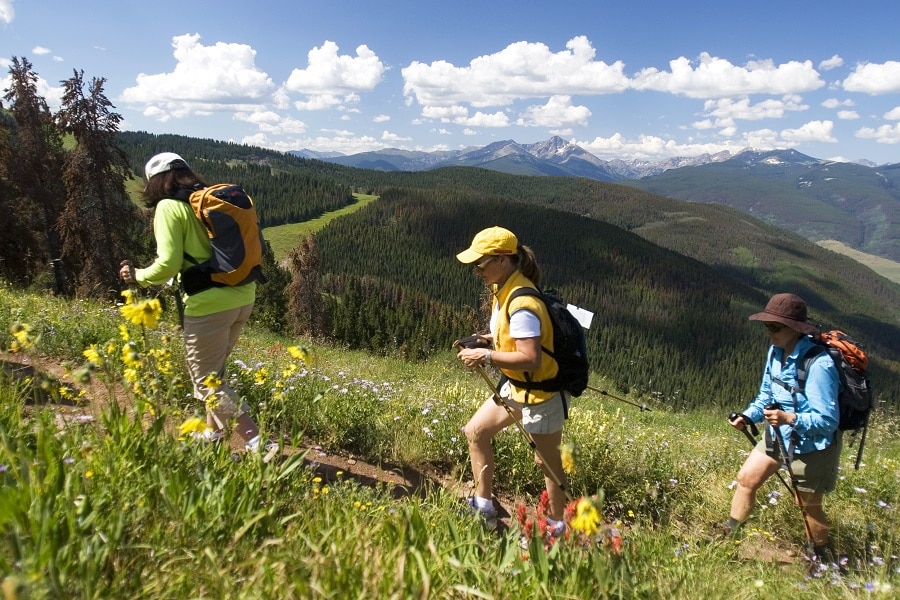
That being said, having a pair of sandals in your backpack is a great solution to unwind at your camping spot and let your feet breathe at ease.
But no matter what you choose, make sure that your feet are able to breathe and that the footwear isn’t too heavy. So don’t rely on your winter gear for this.
Socks
Moisture wicking is the number one characteristic you should consider for your socks during summer. Wool is still a great material for this, even if you may associate wool with colder weather. Synthetic materials work great too. Of course, if you’re going with sandals, you might not need socks at all.
Pants
Hiking shorts were invented for the summer, but having a longer pair of pants with you may prove necessary in places where you need additional protection for your feet, for example where there’s a lot of vegetation. Poison ivy is no joke and it literally grows everywhere. Plus, long pants are also better in the desert or in similar environments where the sun shines very brightly and you’re in danger of getting sunburns.
During summer, the qualities you should look for in your pants are:
- Lightweight.
- Light colors.
- Dry quickly.
- Slim.
- Let your skin breathe.
Upper body wear
Hiking during summer makes staying dry and cool your top priorities, which is why you want to go for shirts that are:
- Short sleeved.
- From materials that don’t absorb moisture – don’t choose 100% cotton.
That being the case quick drying shirts represent your best option because they let your upper body breathe, while at the same time getting dry pretty fast.
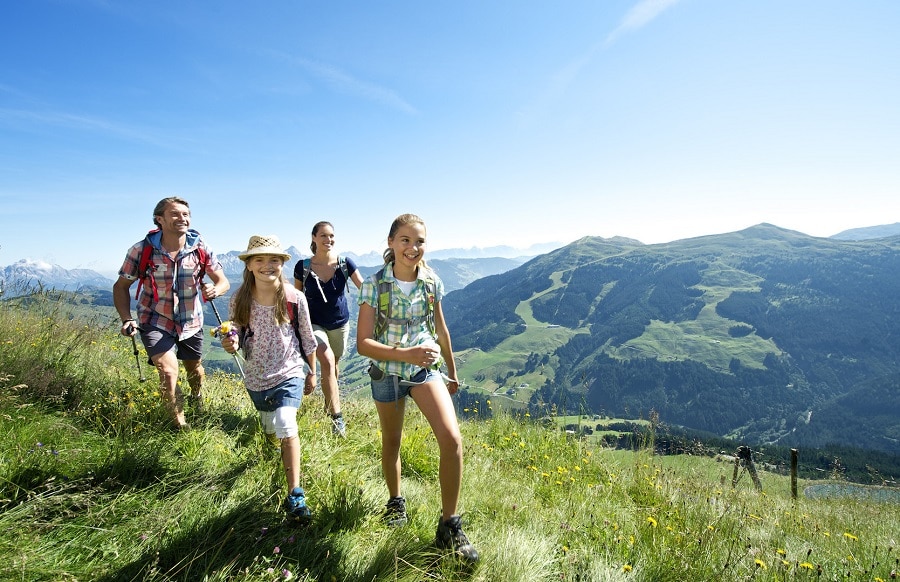
Long sleeved shirts are also a good solution during the night, when it might get a little chilly.
At this point if it gets too cold, as it happens in some environments including the desert, you might also need a jacket to keep you warm enough. A jacket is also good protection in case of rain if the temperatures drop significantly. Otherwise, if you have a quick dry shirt that’s as good as new in half an hour, you probably don’t even need a jacket on.
Headwear
Large brimmed hats are the best solution because the sun is very strong during summer. However, a bandana is always good to have in your backpack because it allows your head to breathe better.
So we would advise you to wear a hat during noon, when the sunrays fall perpendicularly to the ground and the risk of getting sunburns is higher, especially if it’s not cloudy. A bandana is a better option during mornings and afternoons, as well as when it’s cloudier.
Quick dry underpants
This is an additional item we failed to mention before, but it’s especially important to have in your summer hikes when you need to be comfortable and dry everywhere. As such, these underpants are great because:
- They’re moisture wicking.
- They let your body breathe.
- They’re generally a good fit.
- You can wash them by hand and get them dry really fast, in minutes’ time.
Hiking In The Winter
Since winter is the time your wellbeing is mostly affected by your choice of clothes, it can be said that dressing appropriately for your winter hike is almost a survival skill. So staying safe and comfortable is all about mastering the great skill of layering, which is crucial because it lets you stay warm, but doesn’t allow overheating.
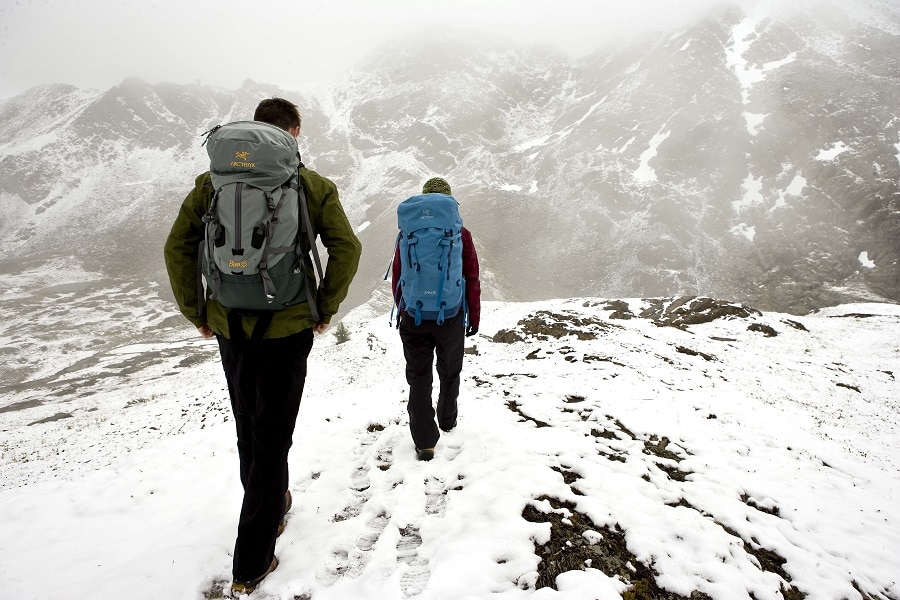
The point is that you need more layers when you’re doing less activity, but you can start taking some of them off as soon as you start moving more so that you don’t overheat. If you get too sweaty, your base layer of clothing won’t protect you from the cold as much, because it will become moist.
[the_ad_group id=”23″]
That’s why we’re going to take a look at the articles of clothing we’ve presented in the What are the basic items? section in terms of layers rather then analyzing them independently.
First layer
This is the layer of clothes that’s closest to your skin and it refers to underwear, socks and shirts, and it should follow these principles:
- Choose something that’s fitting. Not too large because it loses insulation, but not too tight because it makes it harder for you to move.
- Choose water wicking materials that also keep you warm, and stay away from water absorbing materials.
Second layer
This layer is what comes off when you start moving around more, and it refers to things like a pullover or a sweater. Opt for:
- Moisture wicking materials.
- Larger clothes than the first layer, but still fitted enough.
- Comfortable items that can be removed easily.
- Warm items of clothing that still let you breathe.
Third layer
This layer is the one that will give you the most protection from the cold, at it includes:
- Jackets.
- Pants.
- Gloves.
- Fur caps.
- Boots.
Get items that are:
- Waterproof.
- Windproof.
- Sturdy.
- Warm.
- With zippers for additional ventilation for jackets and pants.
- With zippers on your ankles for pants, so you can take them off even if you still have your boots on.
- With ice-resistant soles for your boots.
How Can You Make The Right Choice?
Remember the basic principles of hiking gear selection and make sure you always apply them for clothing. For instance, knowing that cotton absorbs moisture is important. Moist cotton lets your body temperature drop 200 times faster than when you’re not wearing anything. This will probably make you think twice about the safety of your cotton clothes.

Lastly, style is also a contributing factor to your safety and comfort: choose baggier clothes and your moves may become sloppier, or you might not get the same insulation during the winter. To guide your choice in any weather condition, see our article on how to use layers clothing for your safety.
That being said, how does your hiking equipment look for your next trip? Is there something we’ve missed?





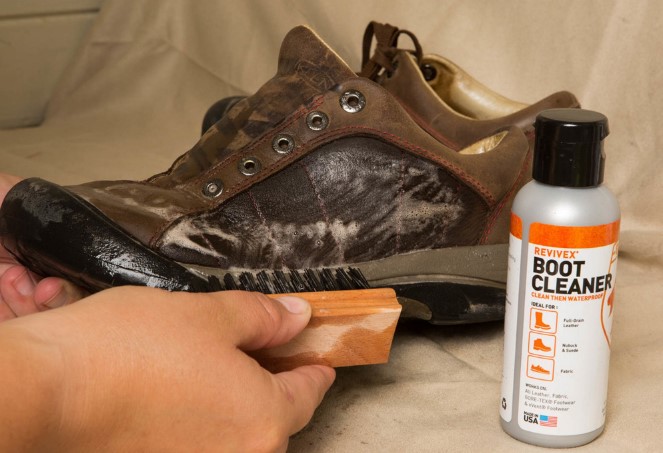
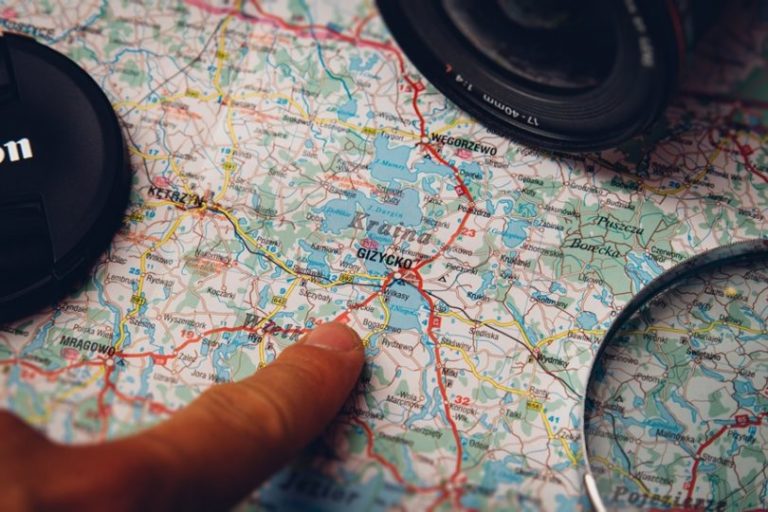
Hiking in the mountains in summer and winter – a serious event that must be properly prepared. It can be skiing or just hiking, a one-day or multi-days. From these circumstances depends on what you need to take to the mountains in winter and summer. My advice: do not take and do not wear cotton clothing in the mountains. There’s absolutely other climate, may be pouring cold rain or wet snow, fog, and most importantly, due to high humidity cotton goods, jeans just don’t dry and believe me, they will always get wet.
When tackling hiking activities that involve extreme weather conditions, the advise that I give my friends is to be overdressed and overprepared than being under on both because if you have prepared more than what the elements call for, it is much easier to adjust.
I like hiking in the summer because the hot weather is challenging and that’s what’s making me hyped. Aside from backpack and what’s inside it, outfit is something that should be carefully prepared. Never underestimate the difficulty of hiking whatever season it is.
I agree with the challenge of hiking regardless of the season, James. They all have their own set of challenges, as well as the equipment they require. The bottomline is, you should be prepared and well-equipped on whatever challenge the season throws at you.